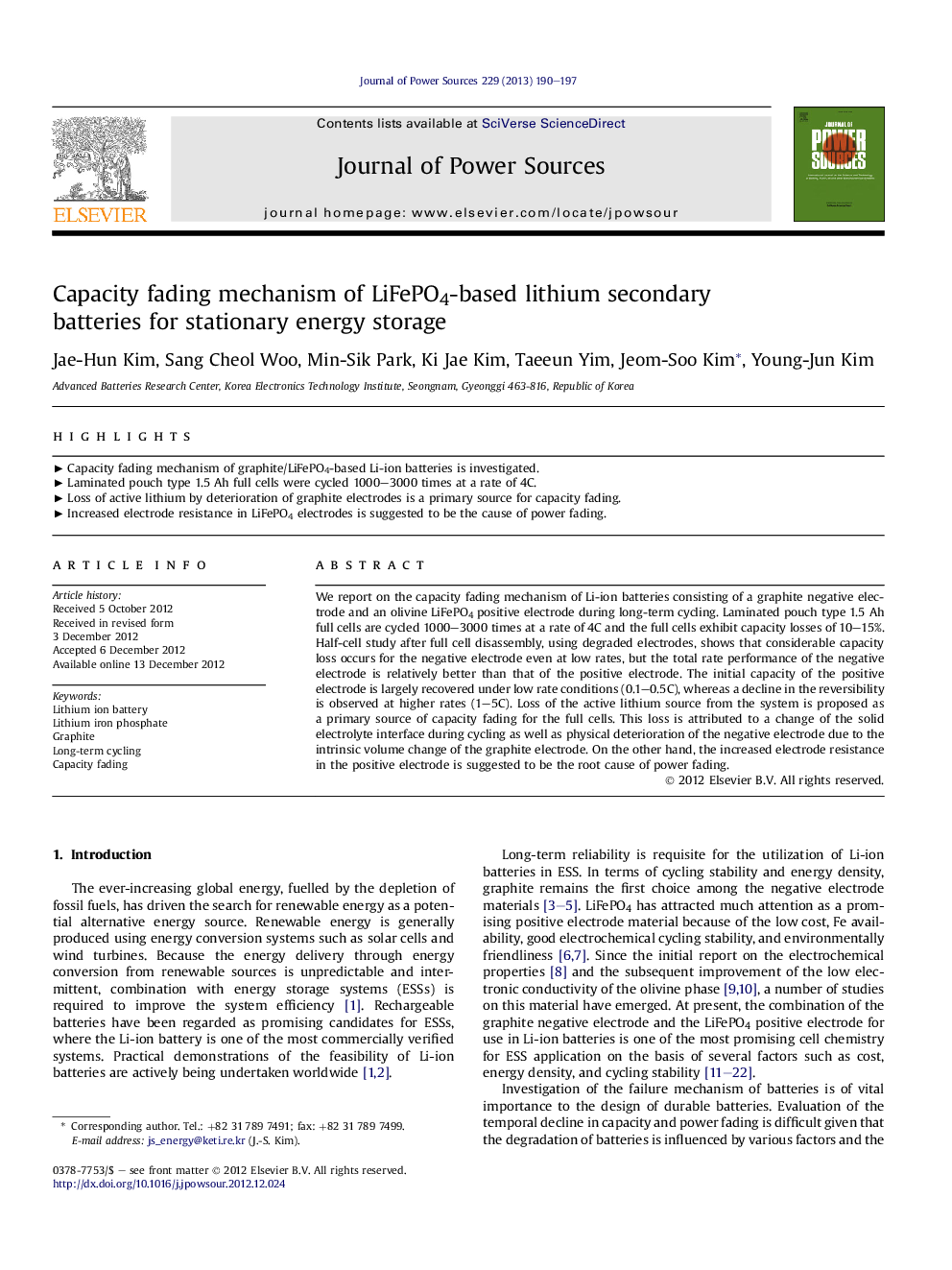| Article ID | Journal | Published Year | Pages | File Type |
|---|---|---|---|---|
| 1288256 | Journal of Power Sources | 2013 | 8 Pages |
We report on the capacity fading mechanism of Li-ion batteries consisting of a graphite negative electrode and an olivine LiFePO4 positive electrode during long-term cycling. Laminated pouch type 1.5 Ah full cells are cycled 1000–3000 times at a rate of 4C and the full cells exhibit capacity losses of 10–15%. Half-cell study after full cell disassembly, using degraded electrodes, shows that considerable capacity loss occurs for the negative electrode even at low rates, but the total rate performance of the negative electrode is relatively better than that of the positive electrode. The initial capacity of the positive electrode is largely recovered under low rate conditions (0.1–0.5C), whereas a decline in the reversibility is observed at higher rates (1–5C). Loss of the active lithium source from the system is proposed as a primary source of capacity fading for the full cells. This loss is attributed to a change of the solid electrolyte interface during cycling as well as physical deterioration of the negative electrode due to the intrinsic volume change of the graphite electrode. On the other hand, the increased electrode resistance in the positive electrode is suggested to be the root cause of power fading.
► Capacity fading mechanism of graphite/LiFePO4-based Li-ion batteries is investigated. ► Laminated pouch type 1.5 Ah full cells were cycled 1000–3000 times at a rate of 4C. ► Loss of active lithium by deterioration of graphite electrodes is a primary source for capacity fading. ► Increased electrode resistance in LiFePO4 electrodes is suggested to be the cause of power fading.
